Since piercing gained popularity in the past few year; dermal piercing and surface piercing have become part of that popularity. So, whenever you go for any piercing, you should be well informed of that piercing. Therefore, if you are opting for dermal piercing or surface piercing that you should have relevant knowledge about it. This comprehensive blog will cover everything you need to know before going for dermal piercing and surface piercing. From procedure to jewellery size and material to Aftercare.
Let us begin!
What are Dermal Piercings?
As the name suggests, the Dermal is a skin; thus, Dermal piercings pierce through the dermis, the layer of skin directly below the epidermis. They are also known as micro dermal piercings or single-point piercings because this piercing has no separate entry or exit point; there is only one point through which the dermal anchor is mounted right under the skin. The size of the anchor is around six to seven millimeters long, where the top of the anchor stays on the surface layer of the skin, through which the jewellery is then installed by screwing from the top.
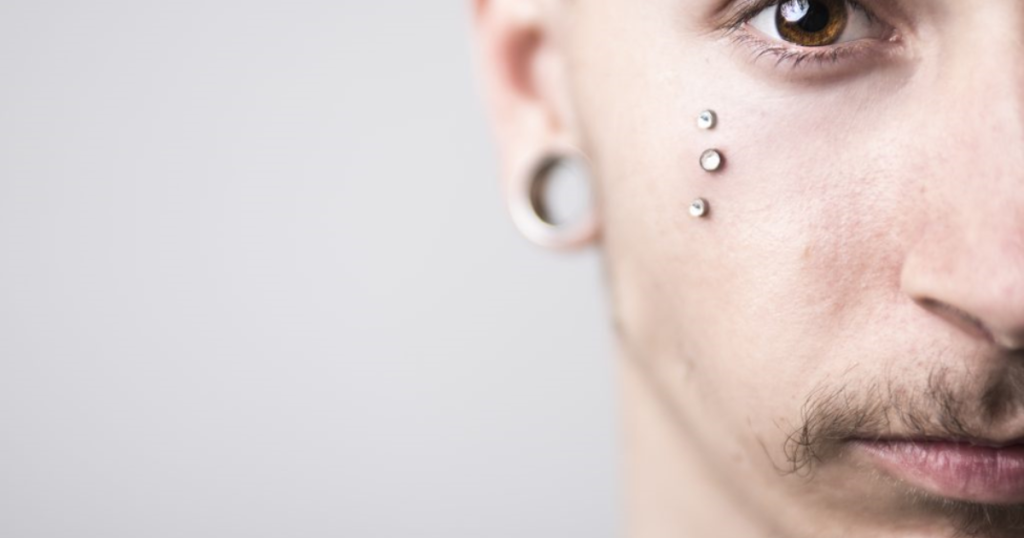
Procedure
Dermal piercings typically create small indents in the skin. To make a hole, the piercer will first clean and sterilize the area to make a small incision with a needle. They will insert the jewellery and leave the area to heal.
The most popular places for dermal piercings are as follows
- Nape of the neck
- Lower back dimples
- Abdominal area and chest
- Cheekbones and collarbones
Aftercare
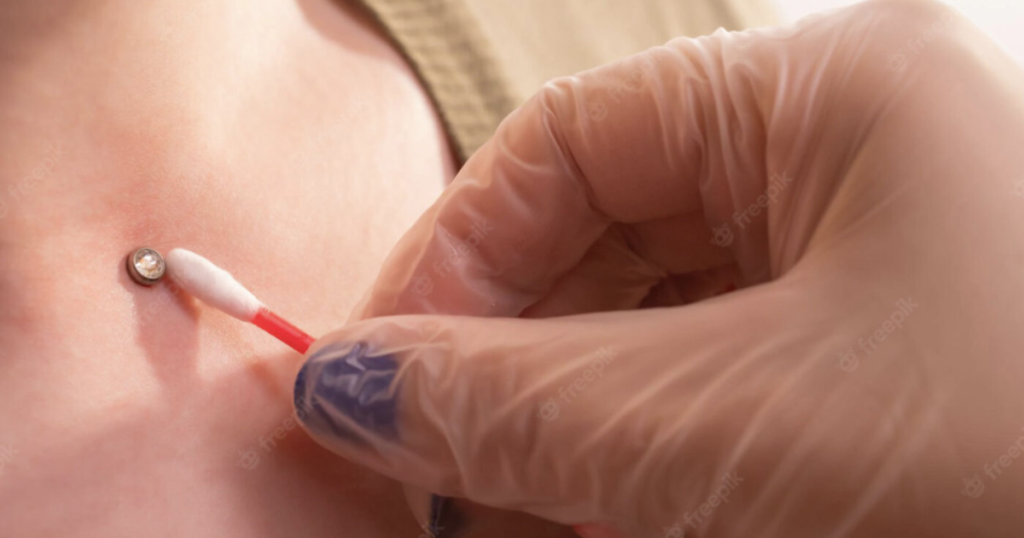
Dermal piercings require proper care to heal and maintain the piercing.
- Keep the area clean, dry and protected.
- Use antiseptic soap that gently cleanses the pierced area twice a day, protecting the area from germs. Moreover, if itching occurs, use Aftercare itching gels to relieve itching and promote healing while protecting the piercing from getting damaged during removal.
- Avoid soaking or exposing it to excessive heat or cold, and avoid changing the jewellery too soon until it heals properly.
Healing Time: Healing time for this piercing varies from person to person and how much you care for it. Usually, it will take 1 to 3 months; however, puffiness or crusting is expected during the initial
days. But If you have any of the following symptoms, contact your piercer or medical specialist immediately: severe pain or swelling, unclear discharge, foul odour or skin redness or rash.
Risks and Complications
When you get a dermal piercing, you must practice safe body modification and follow the Aftercare Instructions that your piercer provides. Infections are a common risk with any piercing, but proper Aftercare can significantly reduce the risk of infection. Other complications can include rejection, migration and scarring.
What jewellery to choose?
Choosing the right body jewellery for a dermal piercing is essential for comfort and endurance. The implant-grade materials are better quality than other metals, like titanium, gold or stainless steel, reducing the risk of irritation or infection. The size and shape of the jewellery should also be kept in mind to ensure that the jewellery will fit comfortably and not put pressure on the skin.
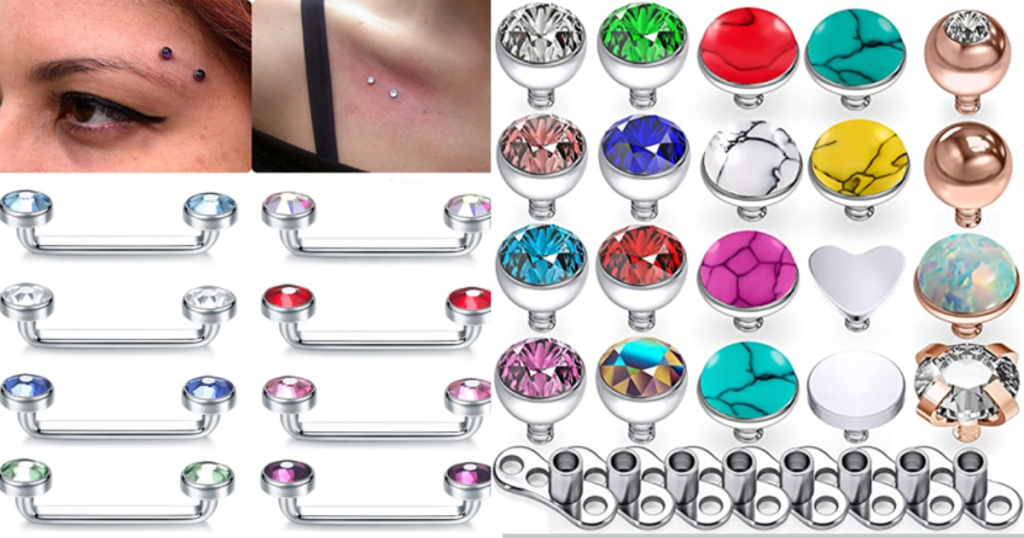
Surface Piercing
Above is all about dermal piercing lets now talk about surface piercing it is usually done on the flat areas of the body like the upper cheeks or chest area. Like other piercings, there is an entrance perforation and exit perforation that is located behind the entrance but in case of surface piercing both the perforations lie next to each other on the skin.
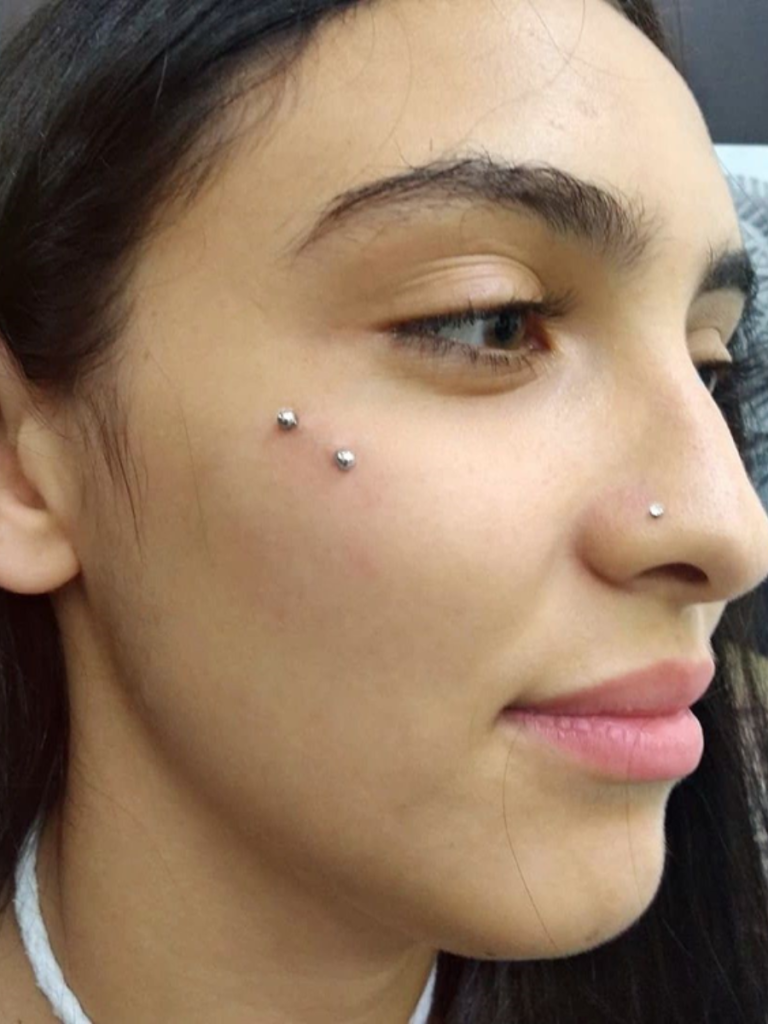
Procedure
The piercer will pinch the skin of the flat area and push the needle through it. During the process, your piercer might choose a scalpel instead of a needle. This method will help them to pierce deeply to lessen the risk of rejection. It will make double perforations through which the jewellery will be passed. With it, you might feel the same pain as you feel for other piercing types in fleshy areas.
Aftercare
The simpler this piercing seems, the more complicated it is, especially when talking about its Aftercare; here are some guidelines to take care of this kind of piercing.
- Dip your piercing inside sea salt or saline solution 2-3 times daily.
- Be careful with snagging and catching on clothing, jewellery and other objects. As most surface piercings are done on the nape of your neck, collar bone and your pubic region, all these places are prone to snagging risks. Hence, you need to be more careful while brushing, wearing clothes or doing anything else near the piercing; wait till it heals completely.
- Minimize the movement of the area where you get the piercing. Less activity makes it heal faster.
- Choose jewellery wisely so that you can prevent infection or irritation
Healing time
Surface piercings can take about three weeks to several months to heal, depending on the location and your body’s response to the piercing. It can take a year or longer for your piercing to recover fully, but you should stop aftercare routines when you notice your wound has stopped weeping clear fluid and there is no longer any redness or swelling. Talk to your piercer first before you stop using your jewellery.
Since a surface piercing sits flat on the skin, it is at a higher risk of rejection. Taking care of your piercing correctly will allow you to enjoy the piercing for years to come. However, even if you do everything right, your body still might reject the piercing. Some say that every surface piercing will be rejected eventually, so keep an eye on it throughout its life so that you can spot migrating jewellery before it causes damage.
What jewellery to choose?
The jewellery you choose for your piercing entirely depends on the location and structure of the piercing, so it is better to talk to your piercer. But the following are the recommended jewellery for surface piercing
- Staple Barbells specially made for surface piercing
- Curved Barbells
- Straight Barbells
- Circular Barbells
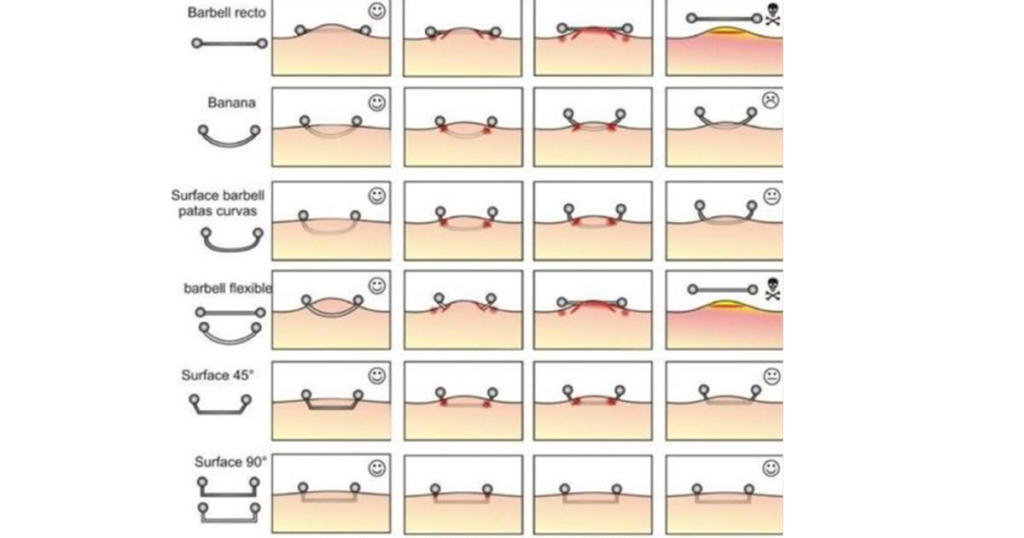
In addition to it, you can add some opal beads, pearls, diamonds or cubic zirconia to make it more beautiful and eye-catching.
Both surface piercing and dermal piercing are similar, but their placement in the skin and how they are pierced are very different. The dermal piercing stays in place with a dermal anchor placed beneath the skin and only has one piercing point. Whereas, surface piercing has two points through which jewellery is passed through i.e. entry and exit.
Thus, dermal and surface piercings are a unique and fashionable way to modify your body. However, they require proper care and attention to ensure they heal properly and avoid complications. Careful consideration should also be taken in choosing a good location for the piercing, followed by correct placement and gauge choice before getting the piercing.